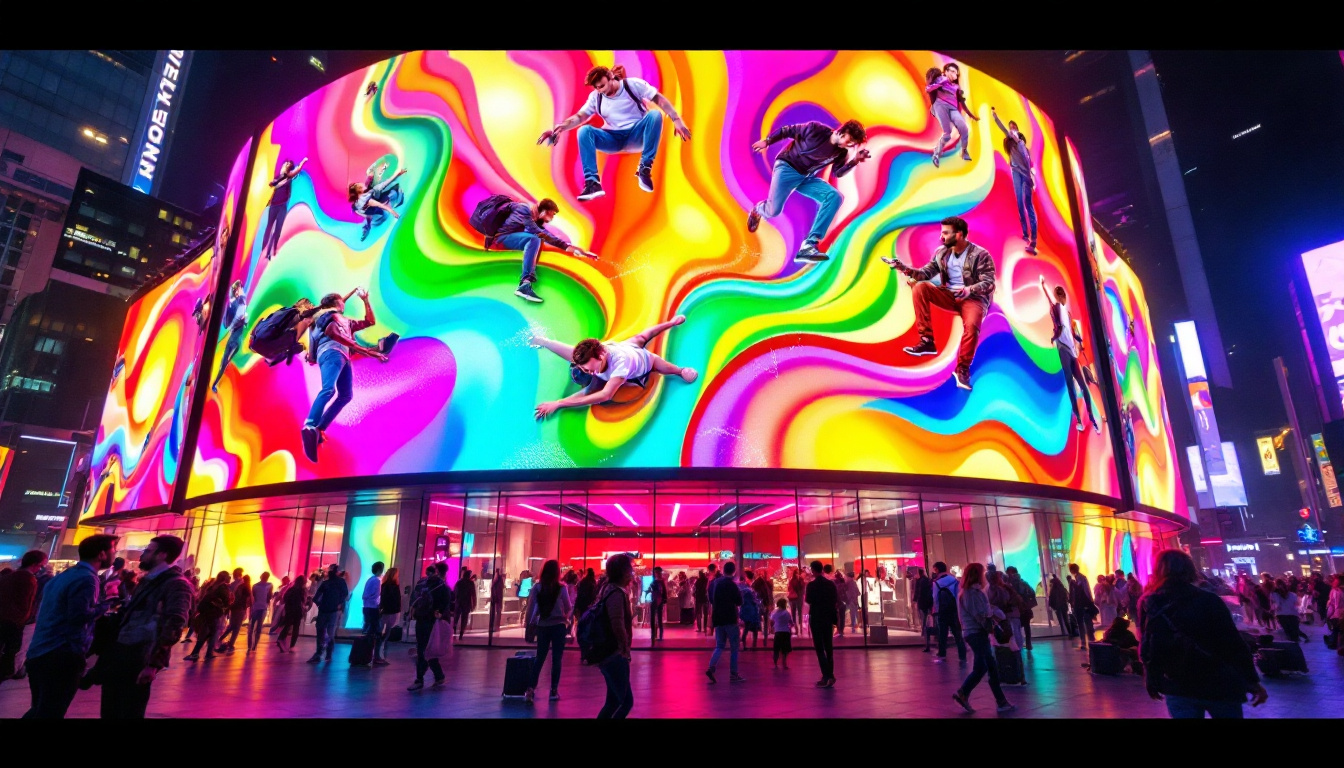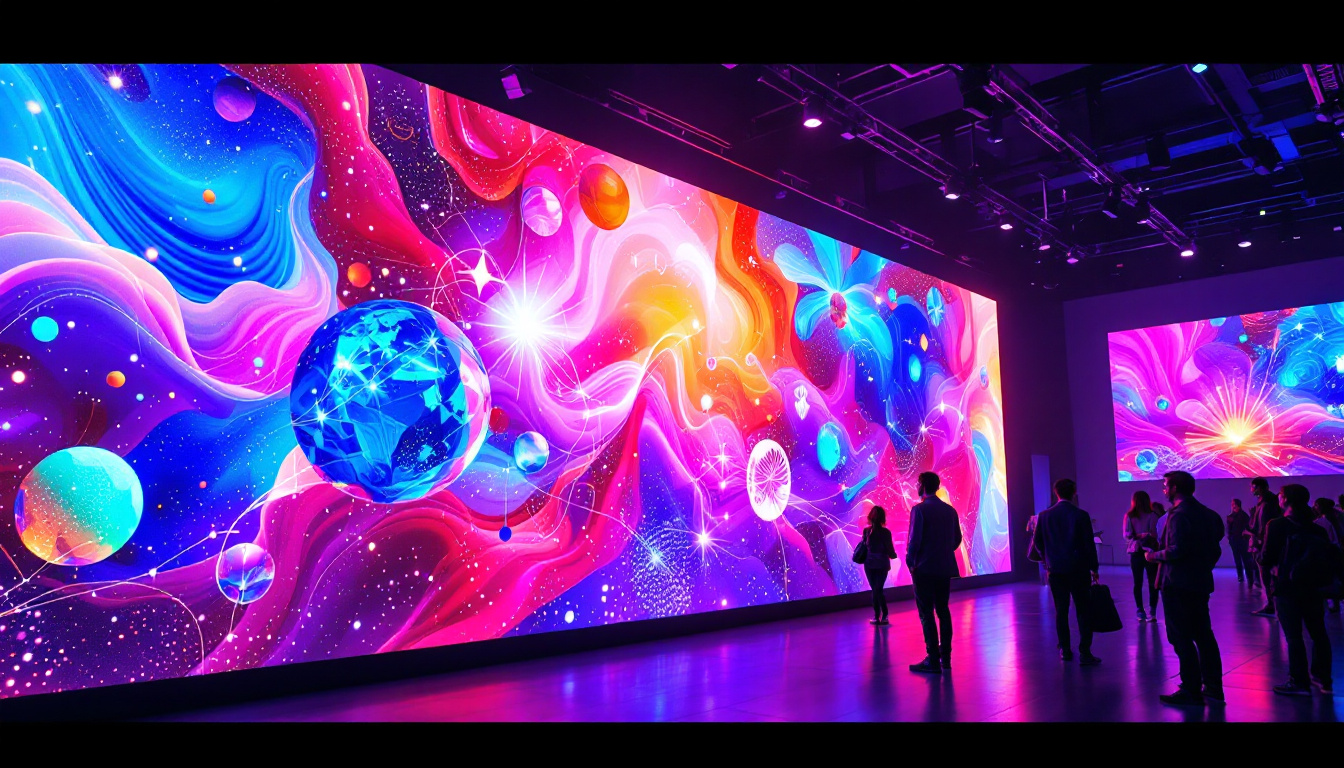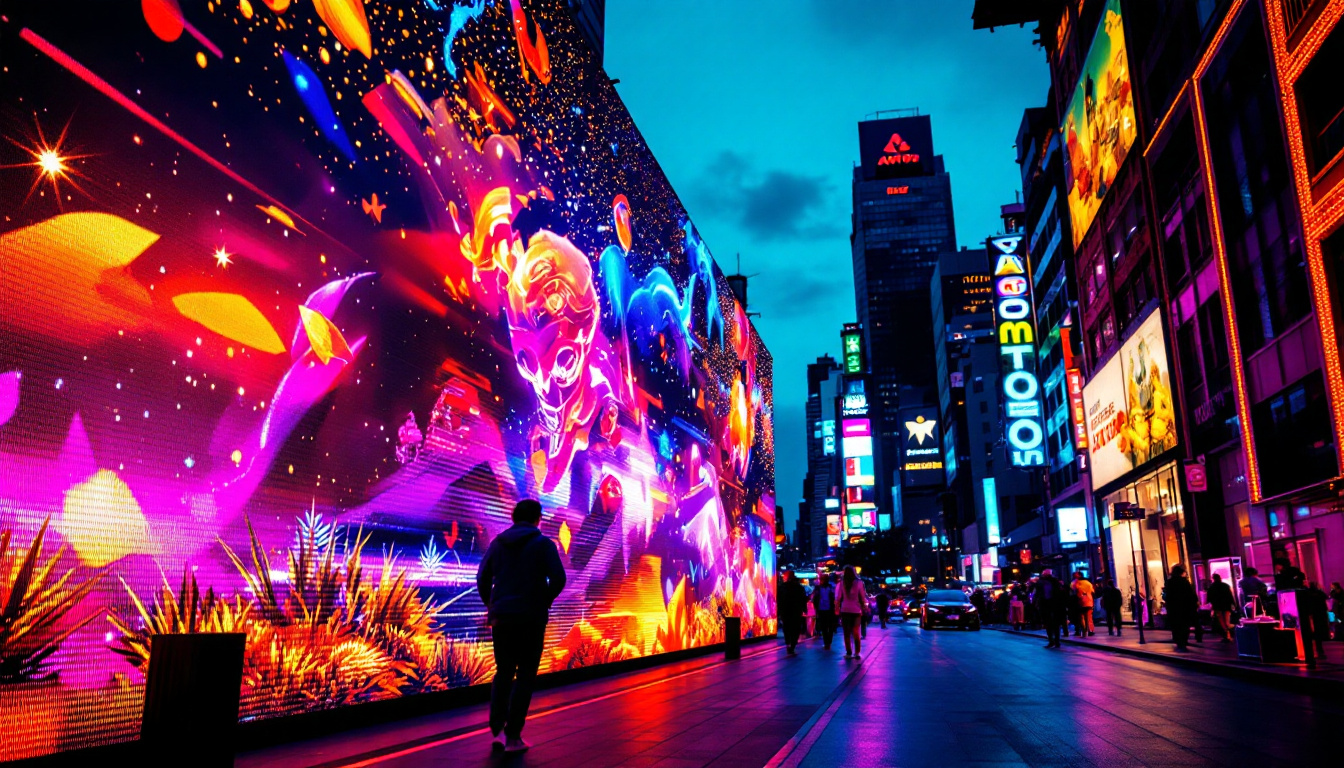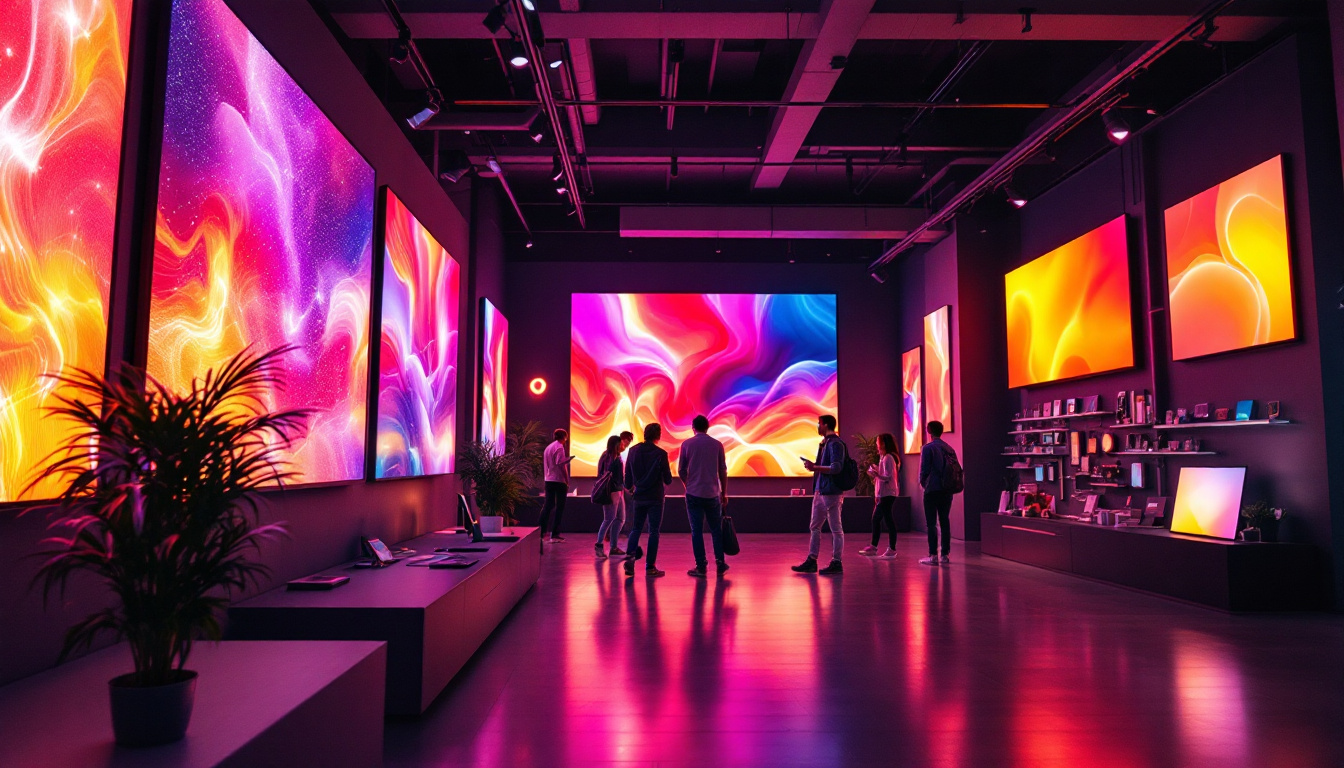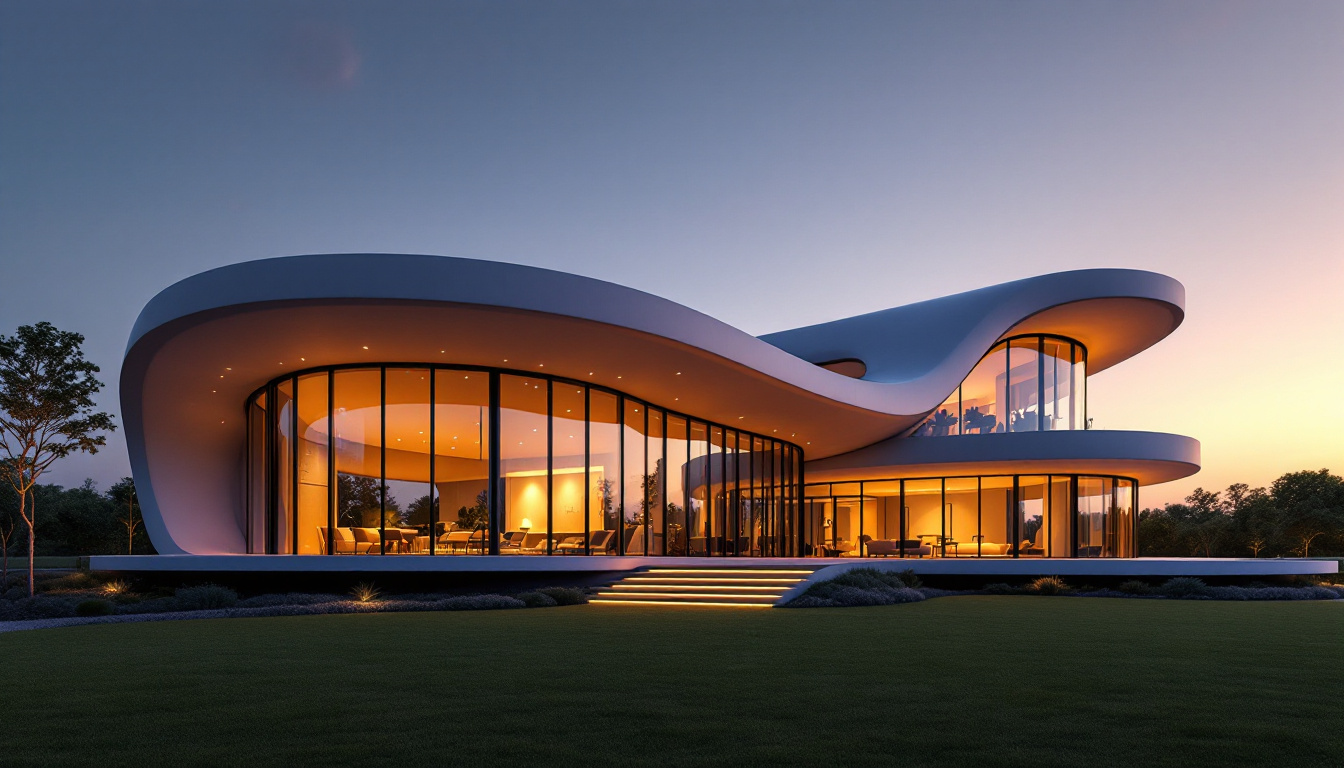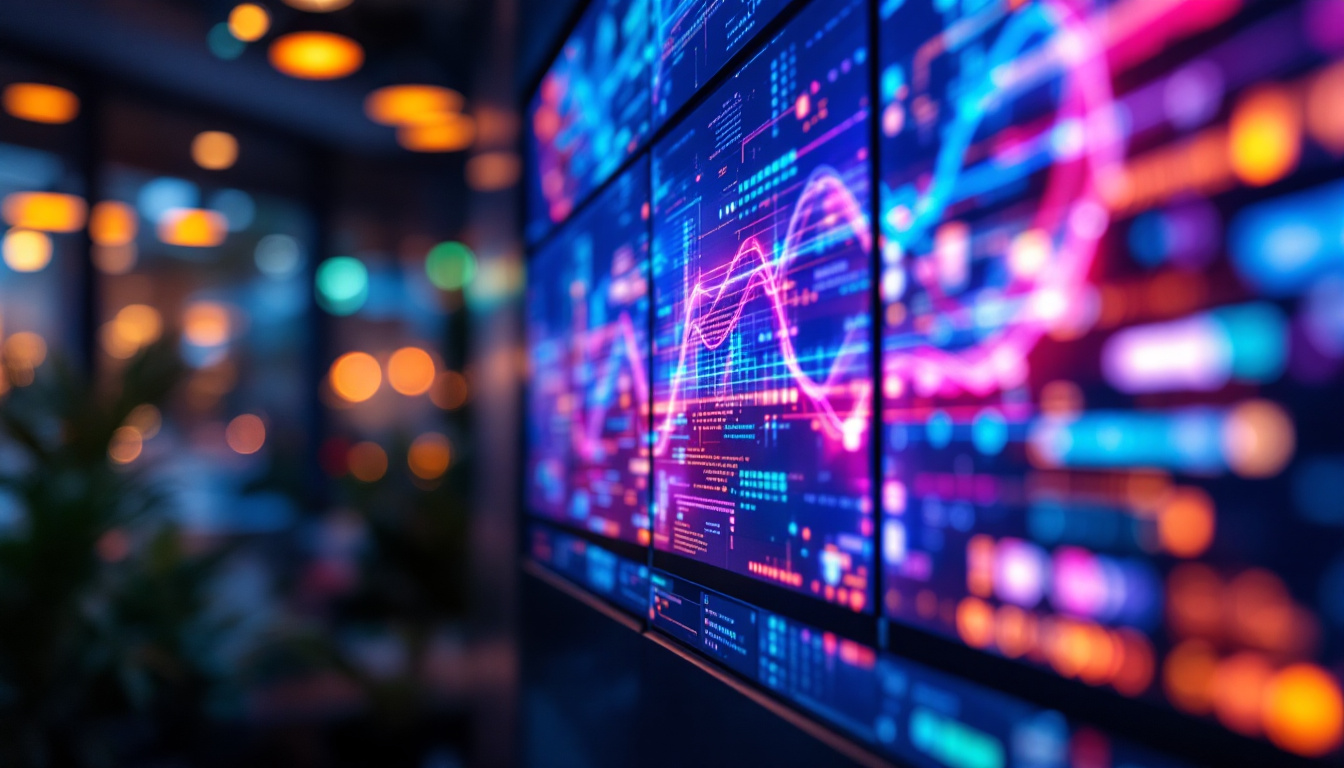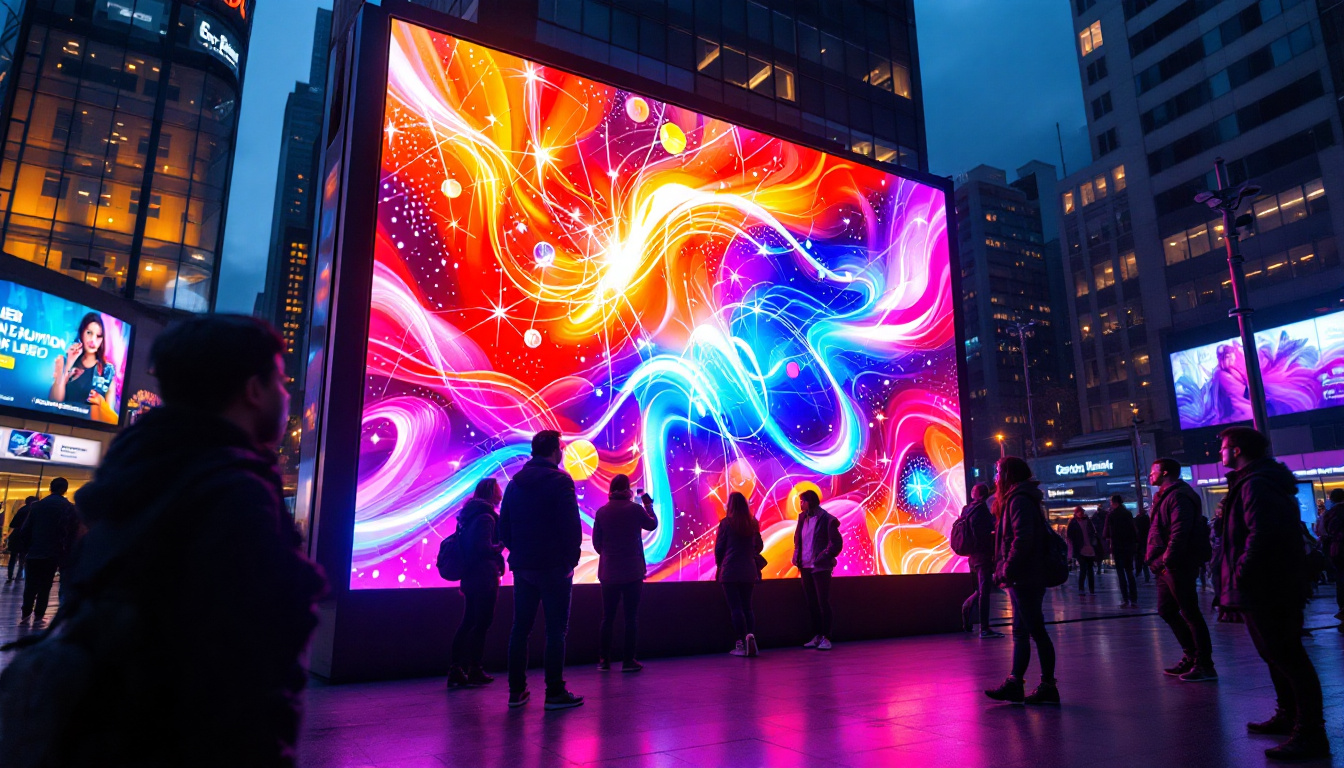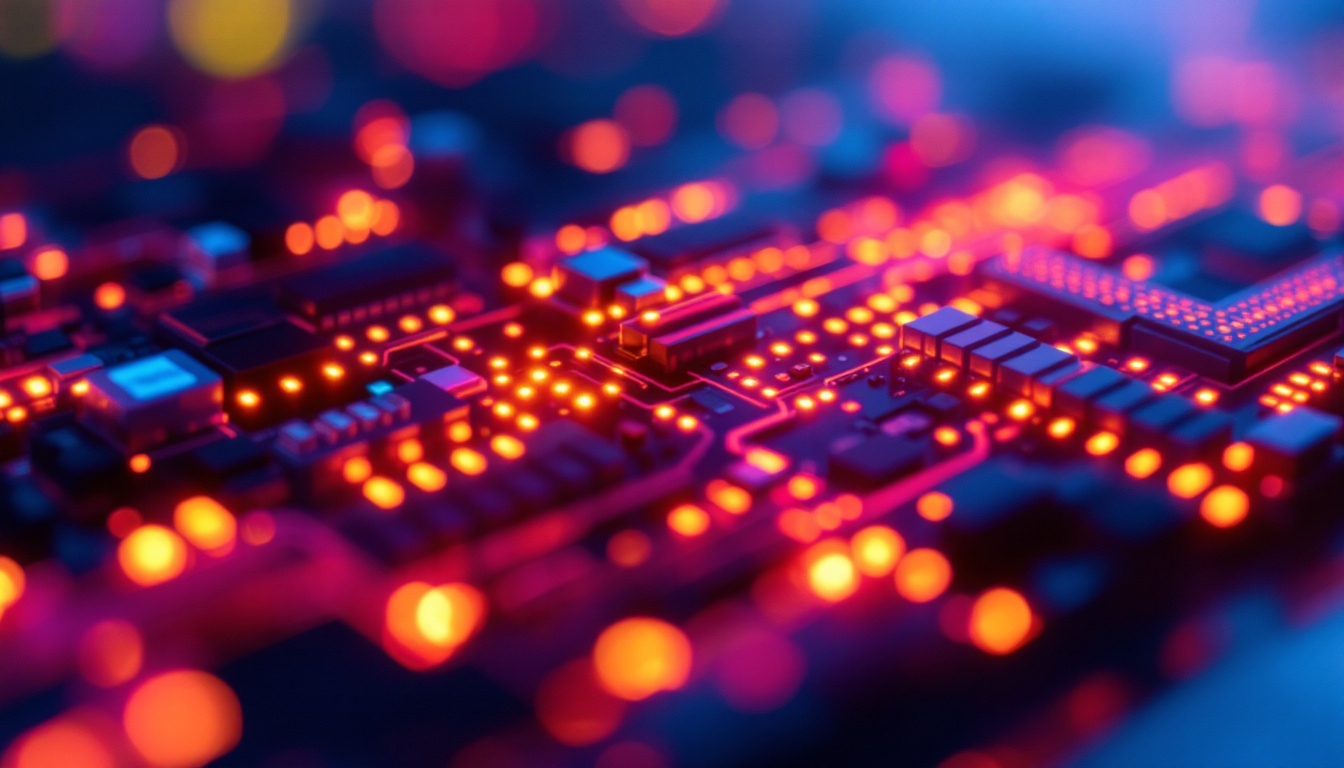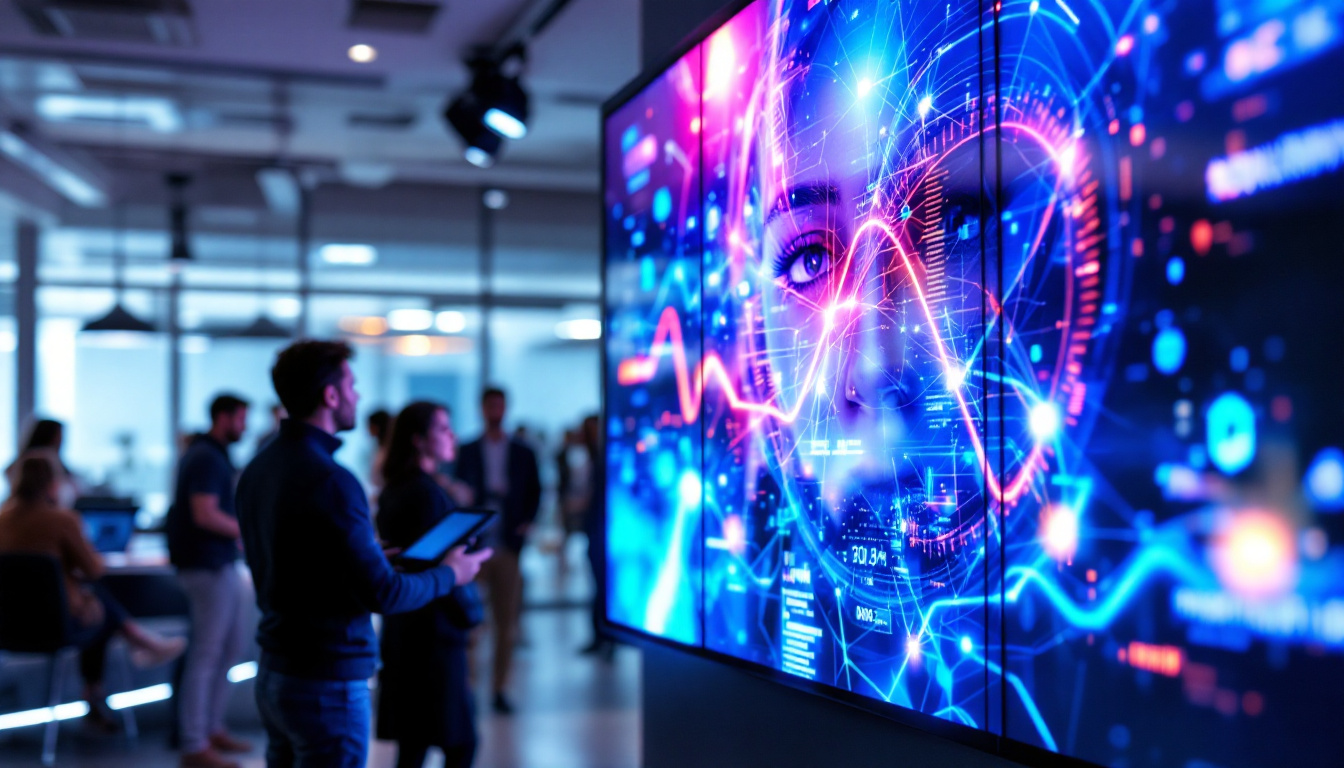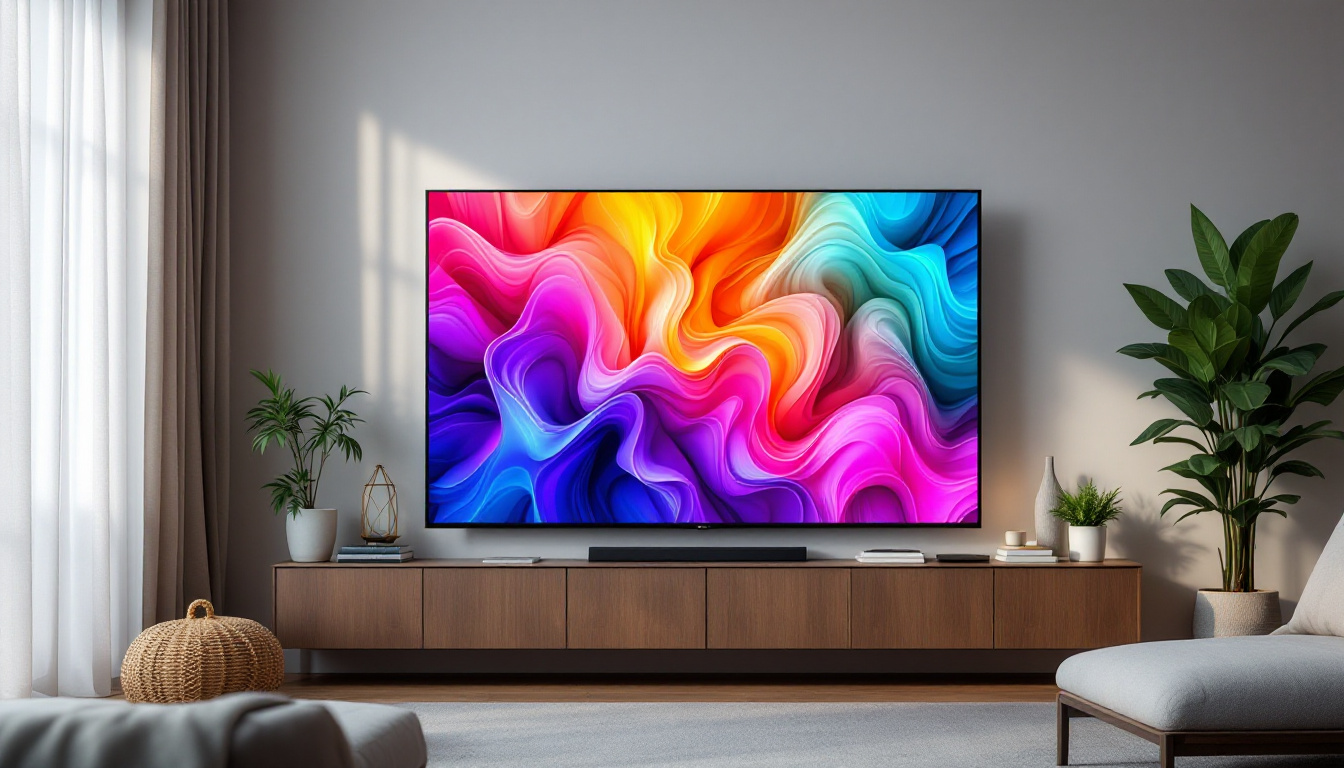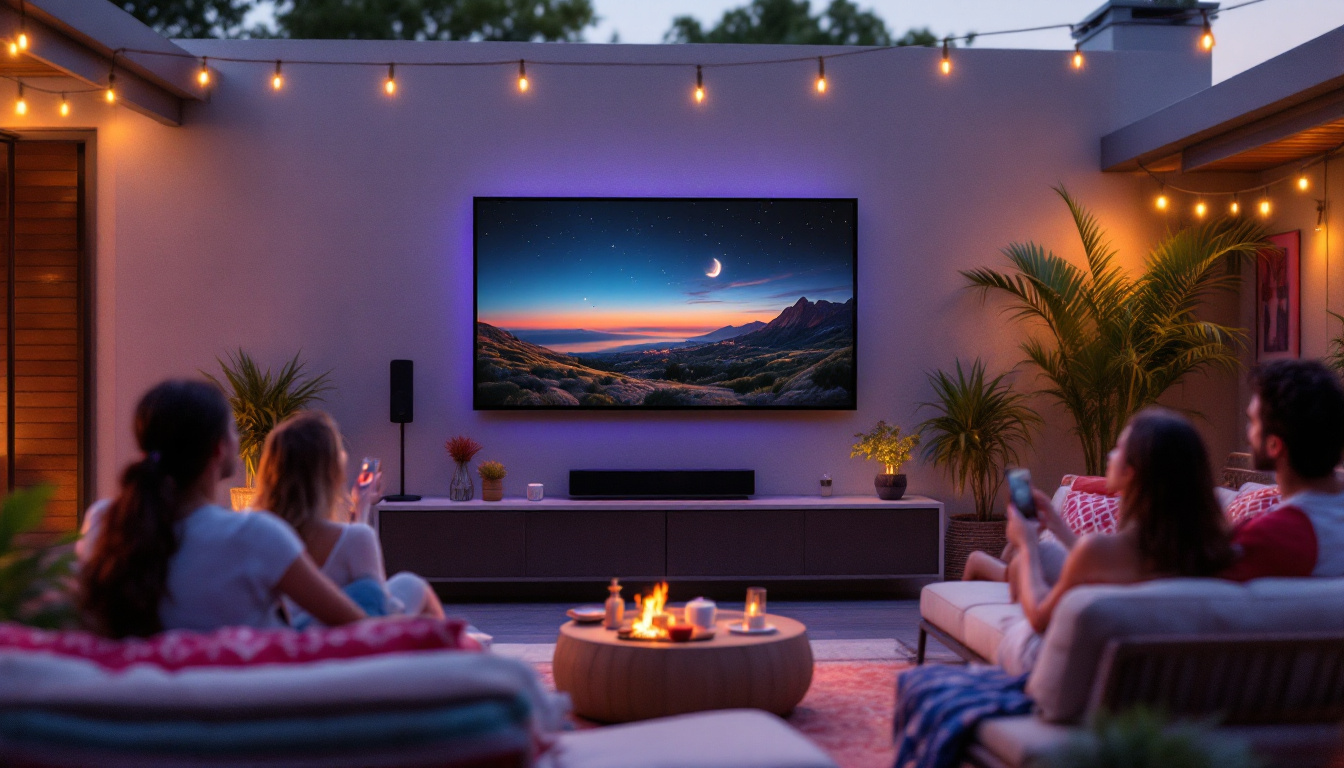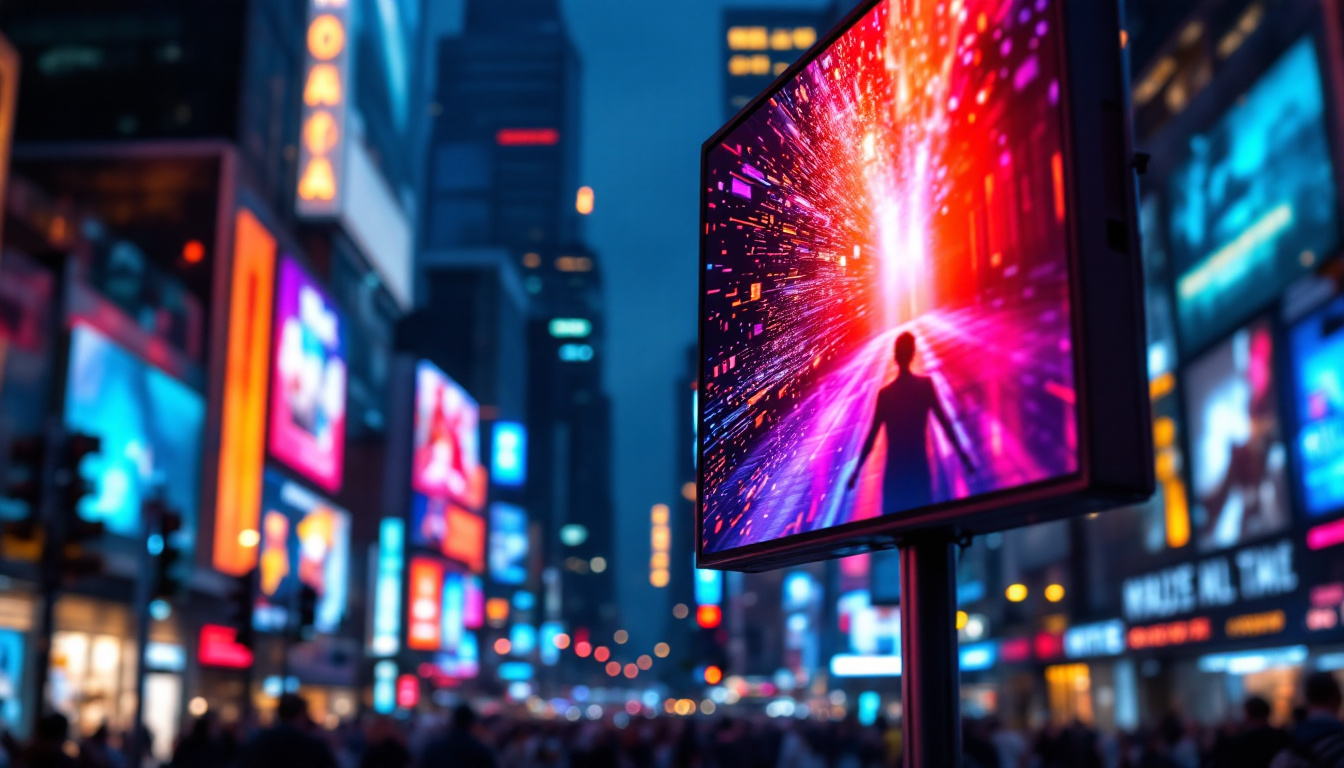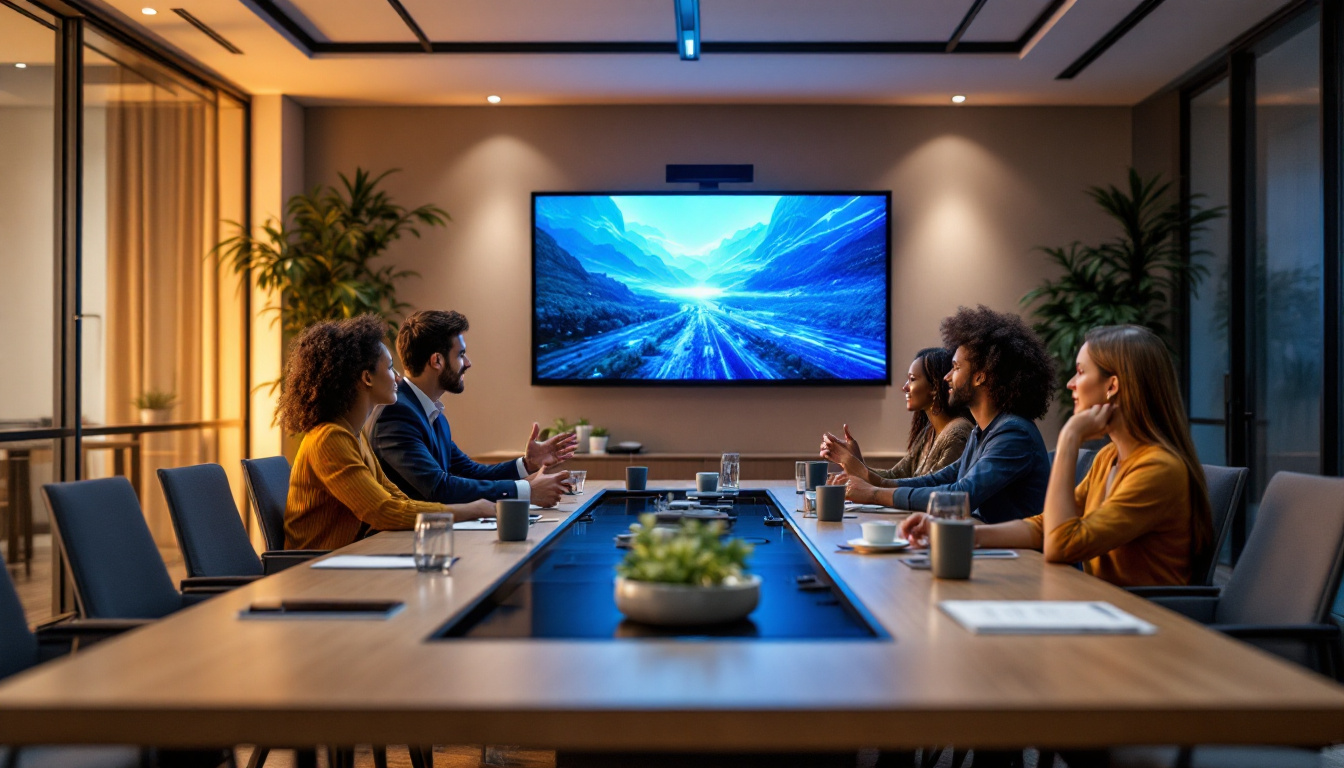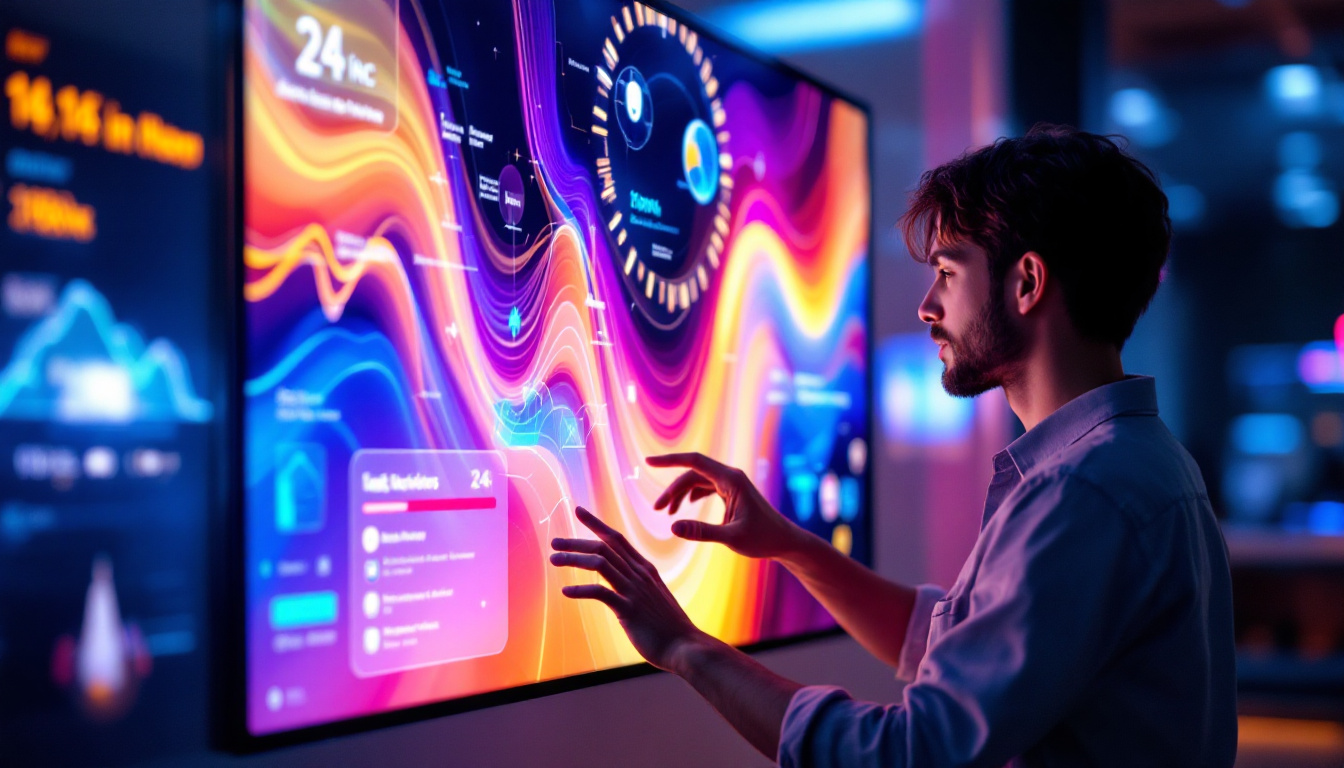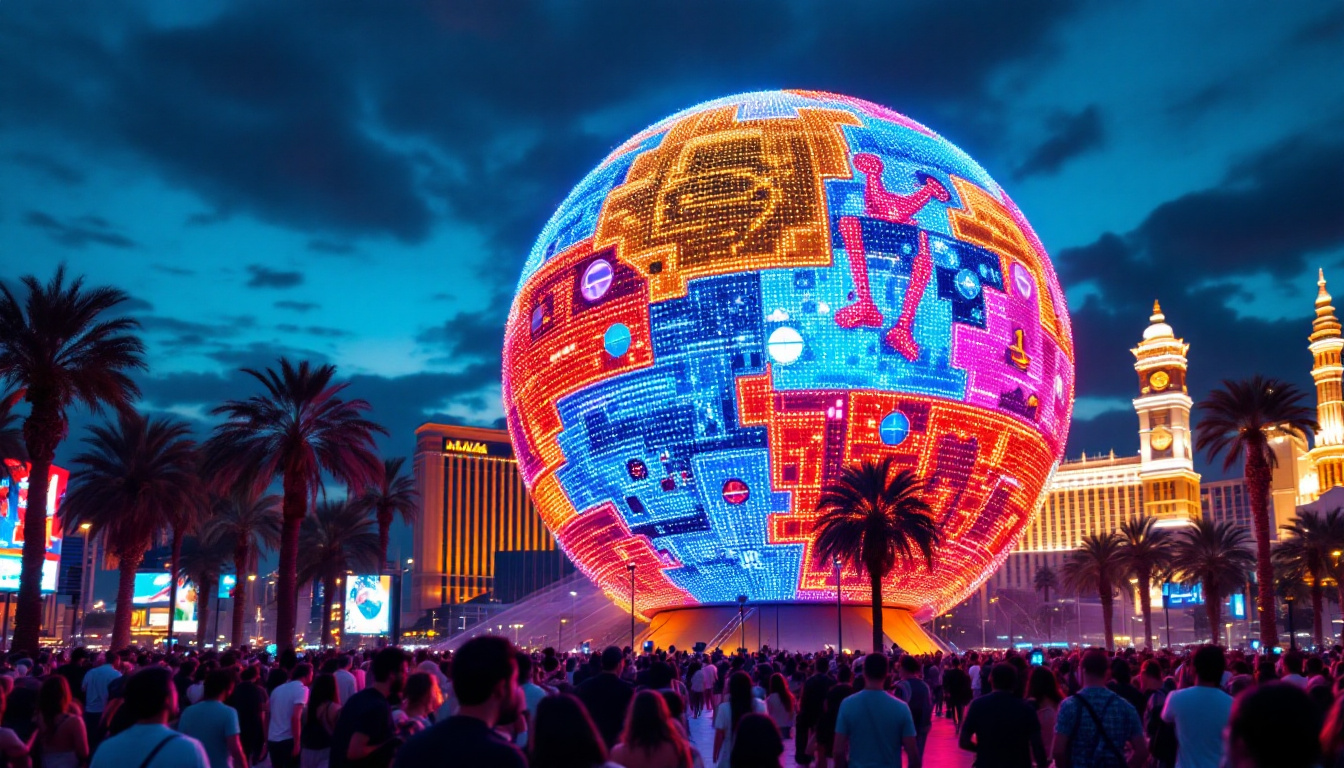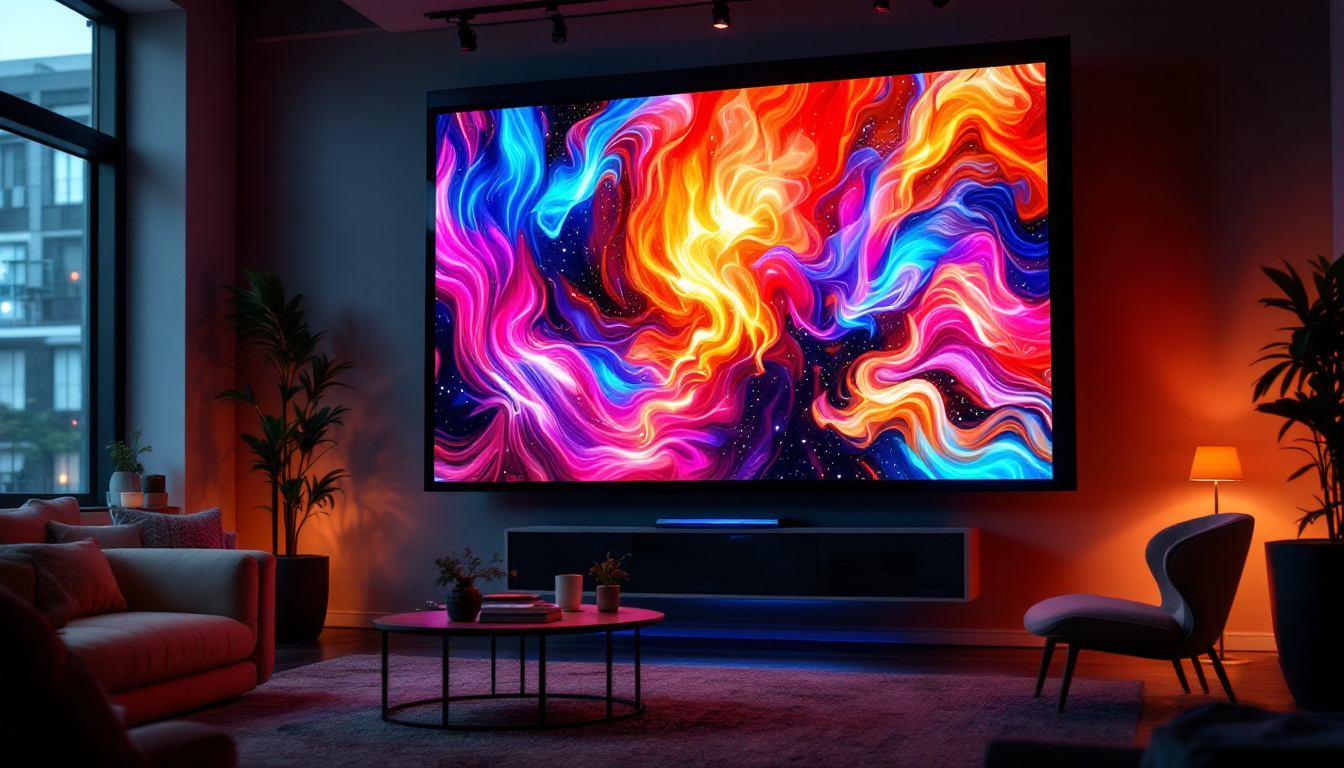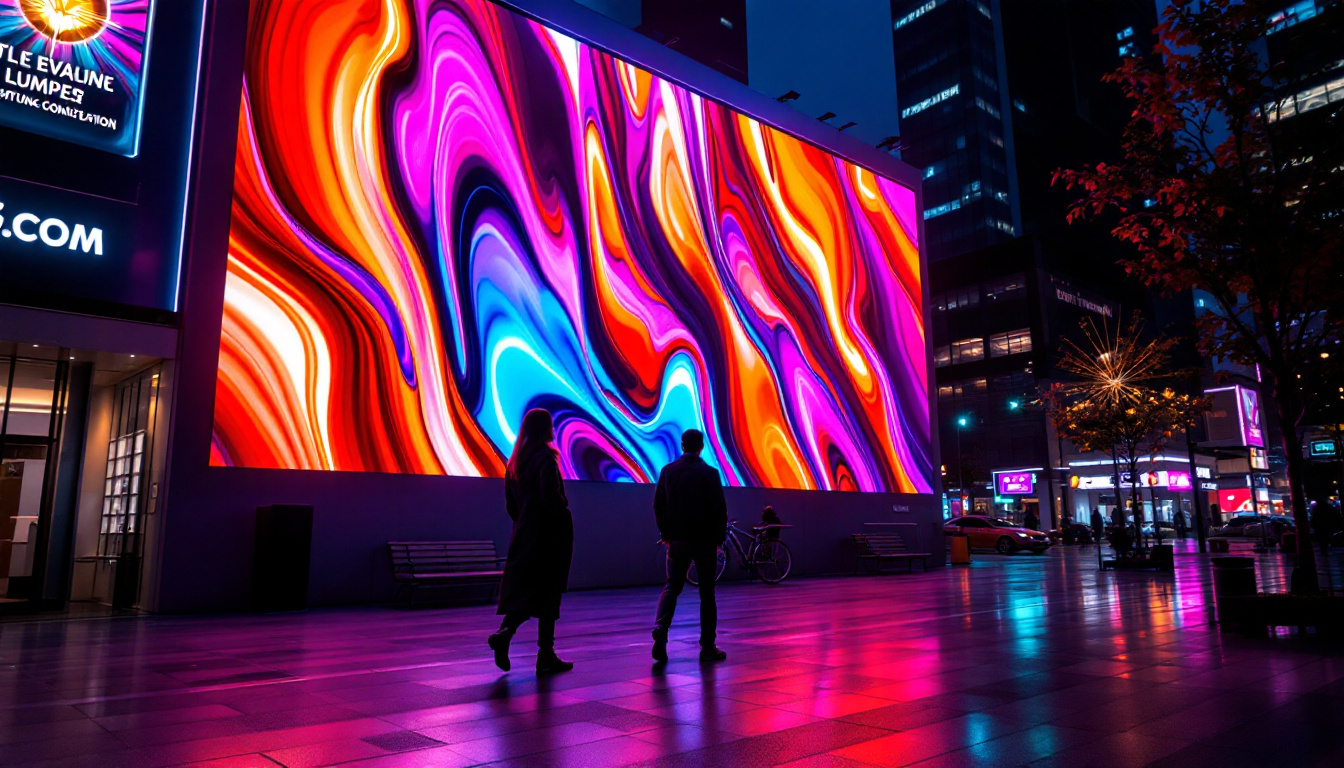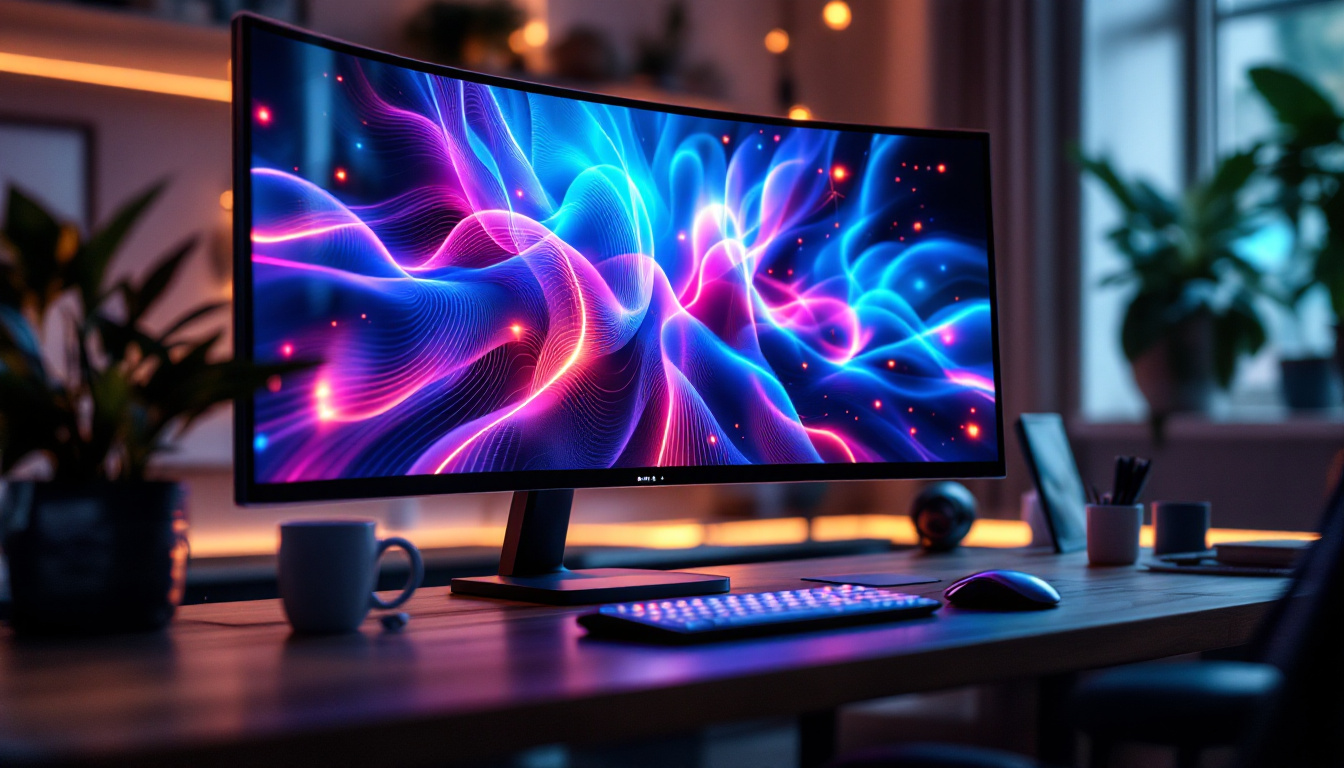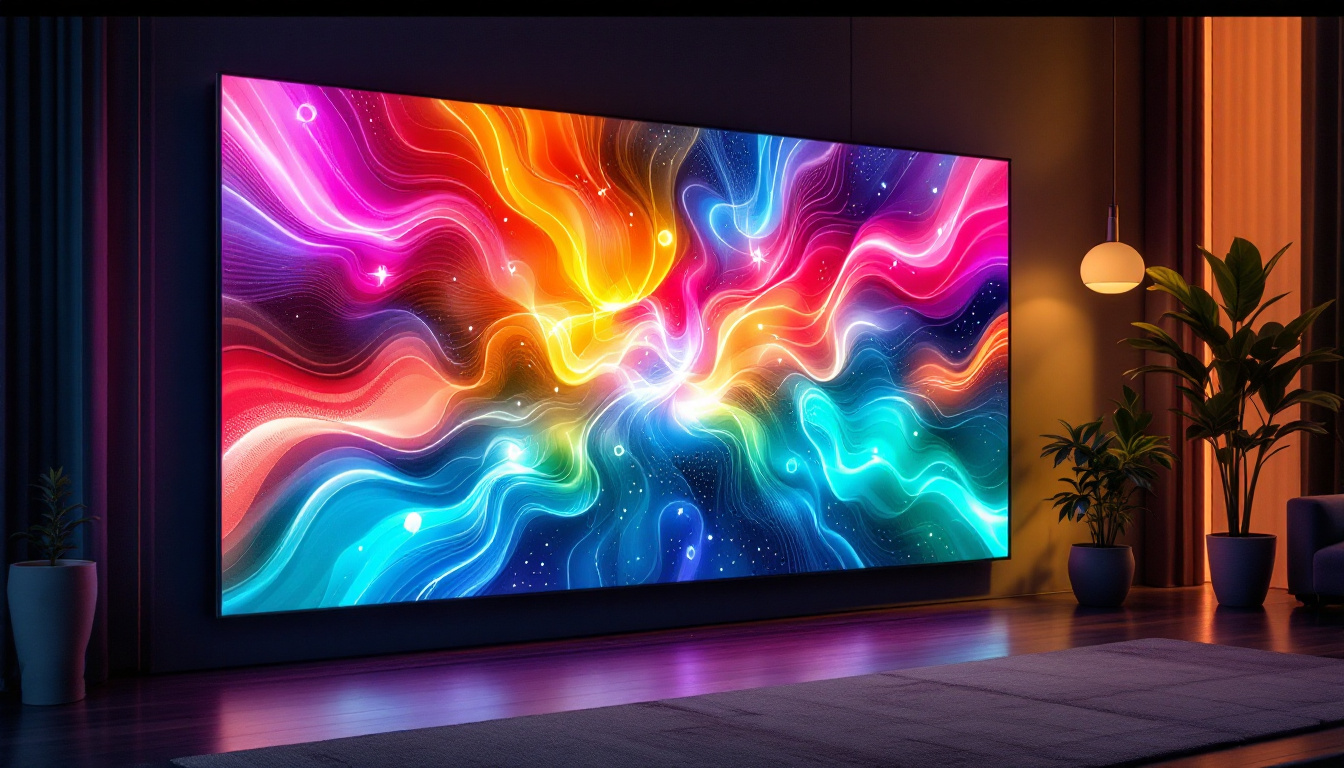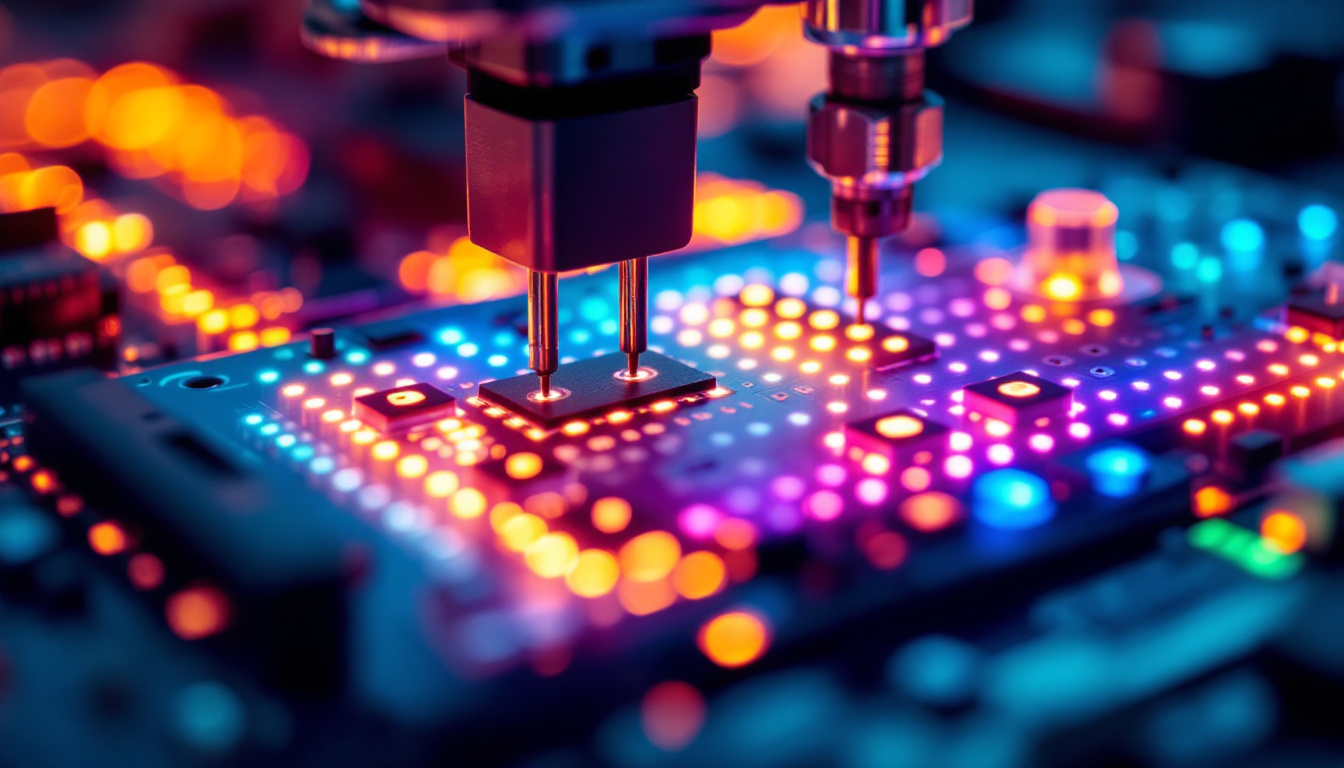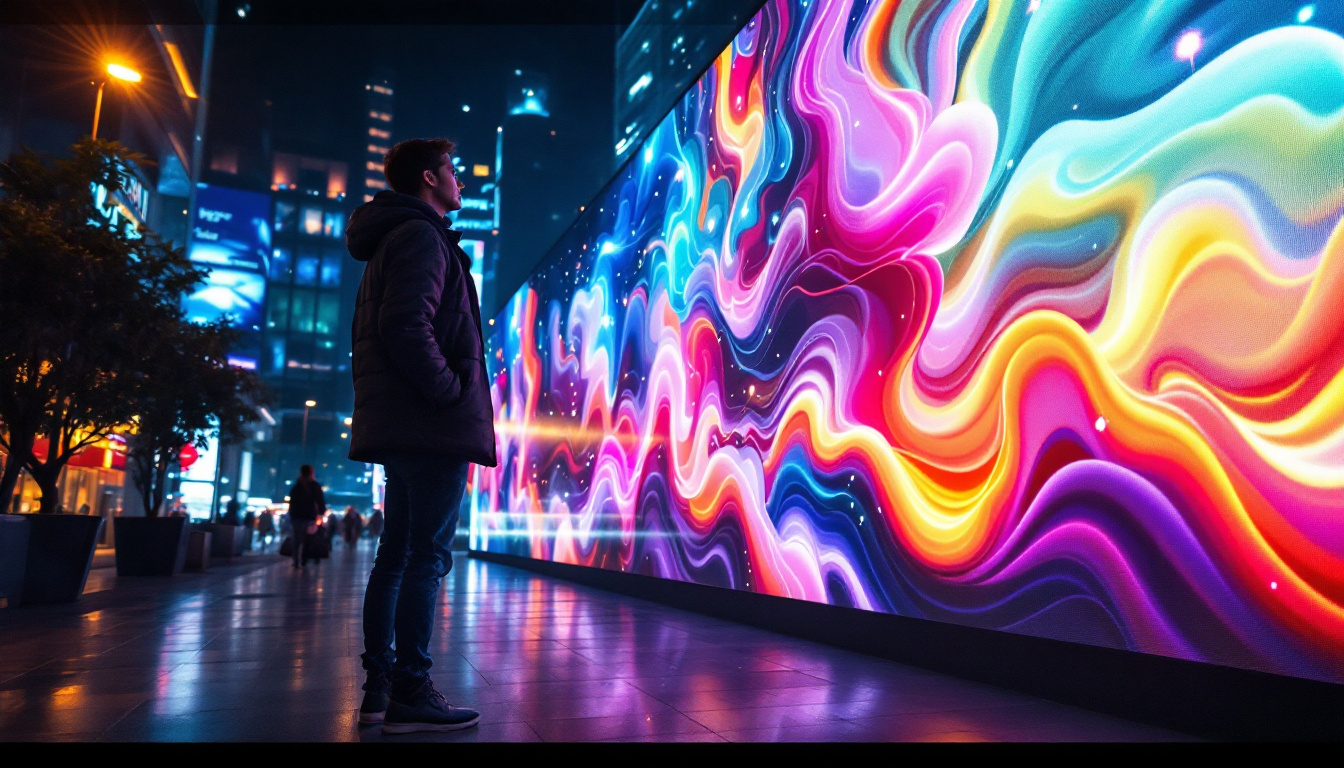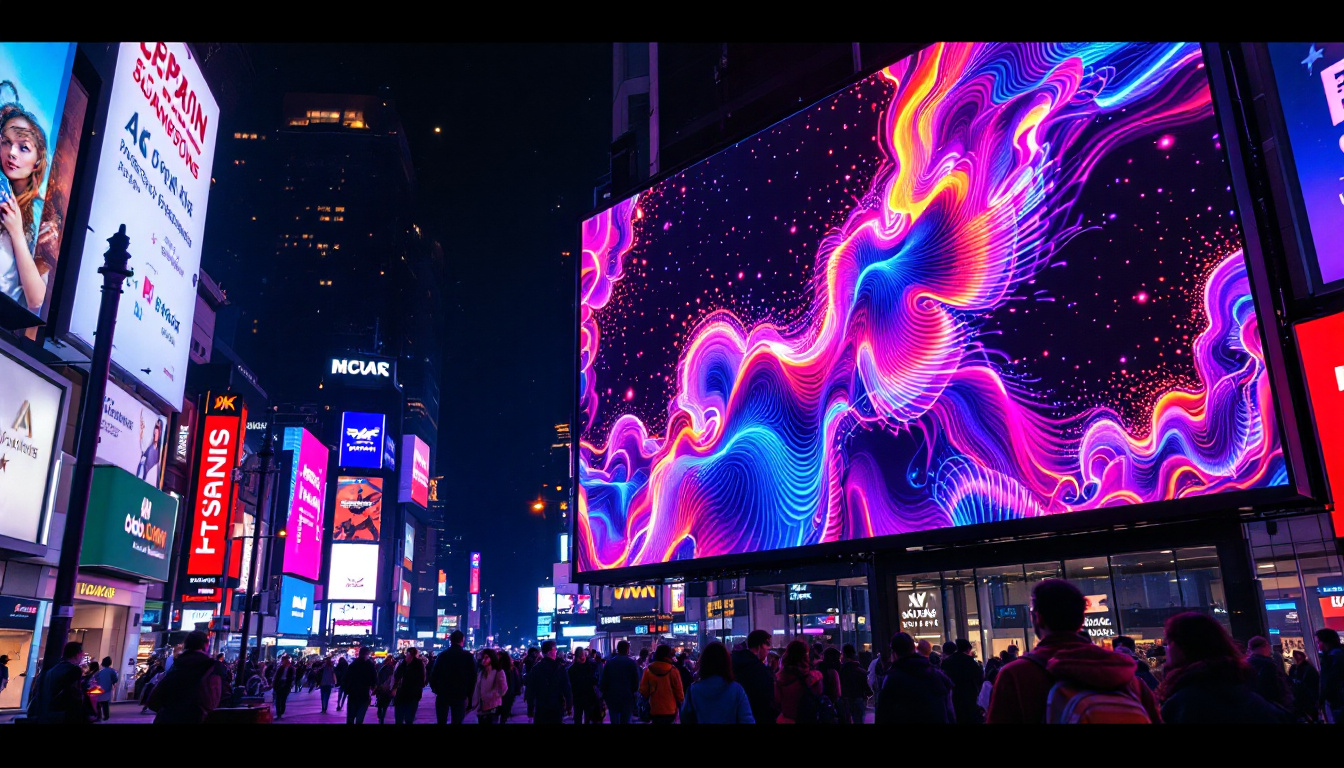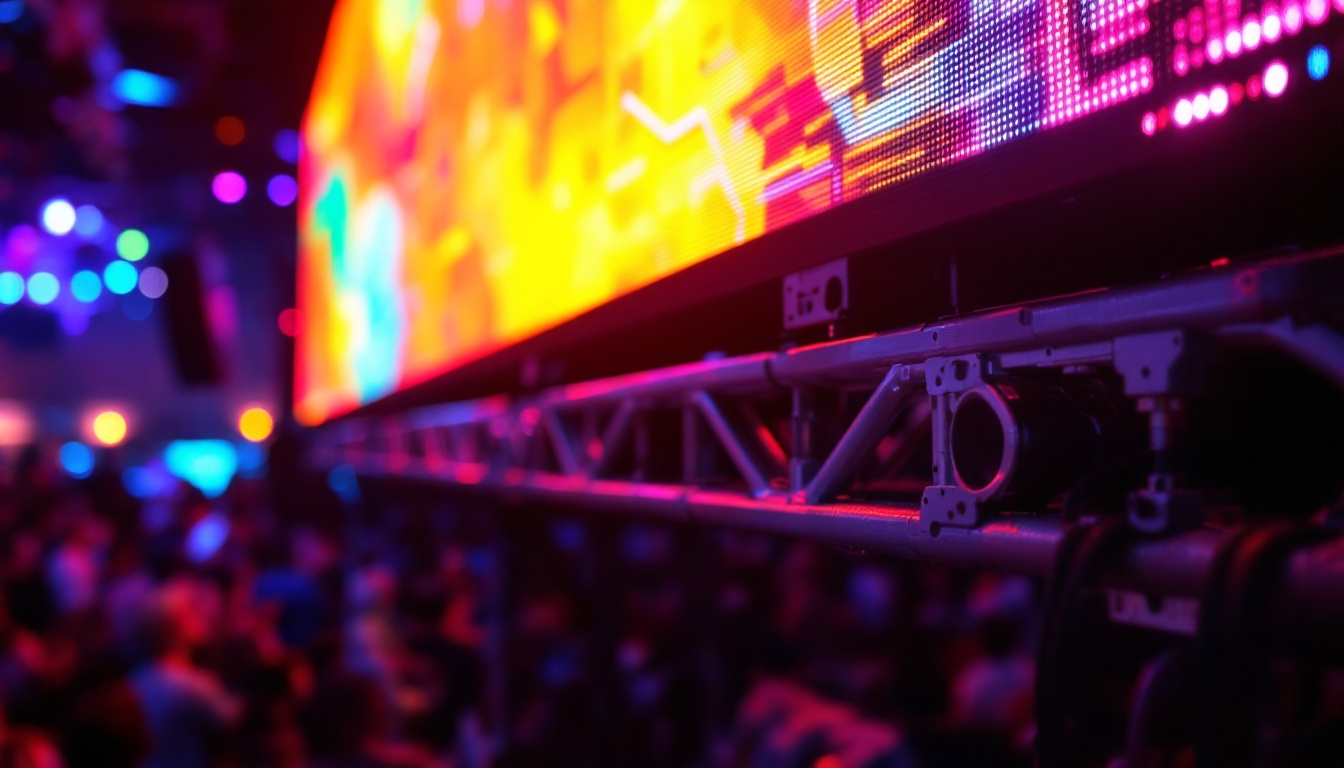In the modern world of visual communication, LED displays have emerged as a leading technology, transforming the way information is conveyed across various platforms. From advertising billboards to indoor screens in corporate settings, LED displays offer versatility, vibrancy, and efficiency. This article delves into the intricacies of LED displays, exploring their technology, applications, benefits, and future trends.
Understanding LED Technology
Light Emitting Diodes (LEDs) are semiconductor devices that emit light when an electric current passes through them. This technology has revolutionized the display industry, offering a range of advantages over traditional display methods such as LCD and projection systems. The efficiency and longevity of LEDs have made them a popular choice not just for displays but also for general lighting applications, contributing to energy savings and reduced environmental impact.
The Basics of LED Displays
At its core, an LED display consists of numerous individual LEDs arranged in a grid format. Each LED can emit different colors, and when combined, they create a full-color image. The primary components of an LED display include:
- LED Modules: These are the building blocks of the display, containing multiple LEDs.
- Control Systems: These systems manage the signals sent to the LEDs, ensuring accurate color representation and synchronization.
- Power Supply: A reliable power source is crucial for maintaining consistent brightness and performance.
LED displays can be categorized into two main types: direct view and rear projection. Direct view displays are composed of individual LEDs visible from the front, while rear projection displays utilize LEDs to project images onto a screen from behind. The technology behind these displays allows for rapid refresh rates and vibrant colors, making them suitable for dynamic content such as video and animations. Additionally, advancements in LED technology have led to improvements in energy efficiency, making these displays not only brighter but also more sustainable.
Types of LED Displays
LED displays come in various forms, each designed for specific applications. The most common types include:
- Indoor LED Displays: These are typically used in venues such as shopping malls, airports, and conference centers. They offer high resolution and brightness suitable for close viewing.
- Outdoor LED Displays: Built to withstand environmental elements, these displays are often used for advertising on highways and in public spaces. They feature higher brightness levels to ensure visibility in sunlight.
- Transparent LED Displays: A newer innovation, these displays allow light to pass through, making them ideal for storefronts and exhibitions where visibility is essential.
In addition to these common types, there are also specialized LED displays such as flexible LED screens, which can be bent or shaped to fit unconventional spaces, and high-definition LED walls that deliver stunning visual experiences for events and concerts. The versatility of LED technology has not only expanded its applications but has also encouraged creative uses in art installations and interactive displays, pushing the boundaries of how we perceive digital content in our environments. Furthermore, as the technology continues to evolve, we can expect to see even more innovative designs and functionalities that will enhance user experiences across various industries.
Applications of LED Displays
The versatility of LED displays allows them to be utilized in a myriad of applications across different industries. Their ability to deliver striking visuals makes them an attractive option for businesses and organizations.
Advertising and Marketing
One of the most prominent uses of LED displays is in advertising. retailers and brands leverage these displays to capture attention and convey messages effectively. High-resolution outdoor LED billboards can display dynamic content, including videos and animations, which significantly enhance engagement compared to static advertisements.
Additionally, digital signage powered by LED technology allows businesses to update their messages in real-time, tailoring content to specific audiences or events. This flexibility not only improves marketing strategies but also increases return on investment. For instance, during seasonal promotions or special events, businesses can instantly change their advertisements to reflect current trends, ensuring that their marketing efforts remain relevant and impactful.
Events and Entertainment
In the realm of entertainment, LED displays play a crucial role in concerts, sports events, and festivals. Large-scale LED screens are often used to provide audiences with a better viewing experience, ensuring that even those seated far from the stage can enjoy high-quality visuals.
Moreover, LED walls can be configured in various shapes and sizes, allowing for creative stage designs that enhance the overall atmosphere of an event. The ability to synchronize visuals with audio further amplifies the impact of performances. For example, during a live concert, LED displays can showcase stunning visuals that complement the music, creating an immersive experience that captivates the audience. This integration of technology and artistry not only elevates the performance but also leaves a lasting impression on attendees, often leading to increased ticket sales for future events.
Corporate and Educational Use
LED displays are increasingly being adopted in corporate environments for presentations, meetings, and training sessions. Their clarity and brightness make them suitable for large conference rooms, where visibility is paramount.
In educational settings, LED displays can facilitate interactive learning experiences. Teachers can use these displays to showcase multimedia content, engage students, and enhance retention of information. The integration of touch technology further promotes interactivity, making lessons more dynamic. Furthermore, the use of LED displays in classrooms can support diverse learning styles; visual learners benefit from vivid graphics, while auditory learners can engage with accompanying audio content. This adaptability not only enriches the educational experience but also encourages collaboration among students, as they can easily share their ideas and projects using the display technology.
Benefits of LED Displays
LED displays offer numerous advantages that contribute to their growing popularity across various sectors. Understanding these benefits can help organizations make informed decisions when investing in display technology.
Energy Efficiency
One of the standout features of LED technology is its energy efficiency. LED displays consume significantly less power than traditional display technologies, resulting in lower energy bills and a reduced carbon footprint. This efficiency is particularly beneficial for businesses that operate large displays continuously.
Longevity and Durability
LED displays are known for their long lifespan, often exceeding 100,000 hours of operation. This durability translates to lower maintenance costs and less frequent replacements, making them a cost-effective investment in the long run. Additionally, many LED displays are designed to withstand harsh environmental conditions, making them suitable for outdoor use.
High-Quality Visuals
LED displays provide exceptional image quality, characterized by vibrant colors and high contrast ratios. This quality ensures that content is displayed clearly, even in bright sunlight or dimly lit environments. The ability to adjust brightness levels also enhances visibility in varying lighting conditions.
Challenges and Considerations
While LED displays offer numerous benefits, there are also challenges and considerations that potential users should keep in mind. Understanding these factors can help organizations maximize their investment.
Initial Costs
The upfront cost of purchasing and installing LED displays can be significant. However, organizations should consider the long-term savings associated with energy efficiency and reduced maintenance costs. Additionally, financing options and leasing arrangements are often available to alleviate initial financial burdens.
Technical Expertise
Operating and maintaining LED displays may require specialized technical expertise. Organizations may need to invest in training staff or hiring professionals to manage the technology effectively. This consideration is particularly relevant for larger installations that require complex control systems.
Content Management
To fully leverage the capabilities of LED displays, organizations must develop a robust content management strategy. This involves creating engaging and relevant content that resonates with the target audience. Regular updates and maintenance of content are essential to keep the display fresh and effective.
The Future of LED Displays
The LED display industry is continuously evolving, driven by technological advancements and changing consumer demands. Several trends are shaping the future of this technology, promising even more innovative applications and capabilities.
Integration with Smart Technology
As smart technology becomes increasingly prevalent, LED displays are expected to integrate seamlessly with other digital systems. This integration will enable features such as real-time data display, interactive content, and enhanced user experiences. For example, LED displays in retail settings may connect with customer smartphones to deliver personalized offers.
Advancements in Resolution and Color Accuracy
Future developments in LED technology are likely to focus on improving resolution and color accuracy. Higher pixel densities will allow for even more detailed images, making LED displays suitable for applications requiring precision, such as medical imaging and high-end design.
Sustainability Initiatives
With growing awareness of environmental issues, the LED display industry is moving towards more sustainable practices. Manufacturers are exploring eco-friendly materials and production processes to minimize waste and energy consumption. Additionally, recycling programs for old displays are becoming more common, promoting a circular economy.
Conclusion
LED displays have undoubtedly transformed the landscape of visual communication, offering unparalleled versatility and performance. From advertising to education, their applications are vast and varied, making them an essential tool for modern businesses and organizations.
As technology continues to advance, the future of LED displays looks promising, with innovations that will further enhance their capabilities and sustainability. For those considering an investment in display technology, understanding the benefits, challenges, and trends associated with LED displays is crucial for making informed decisions that align with their goals.
In a world where visual impact is paramount, LED displays stand out as a powerful solution, bridging the gap between information and engagement.
Explore Cutting-Edge LED Display Solutions with LumenMatrix
Ready to elevate your visual communication strategy? Discover LumenMatrix’s innovative LED display technology, designed to captivate and engage your audience like never before. From vibrant Indoor and Outdoor LED Wall Displays to dynamic Vehicle and Sports LED Displays, LumenMatrix offers a wide array of solutions tailored to your specific needs. Experience the future of digital signage with our All-in-One LED Displays, LED Posters, and Transparent LED Displays, each crafted to deliver your message with maximum impact. Don’t miss the opportunity to transform your space with our Custom and Floor LED Displays. Check out LumenMatrix LED Display Solutions today and join the revolution in visual communication.

